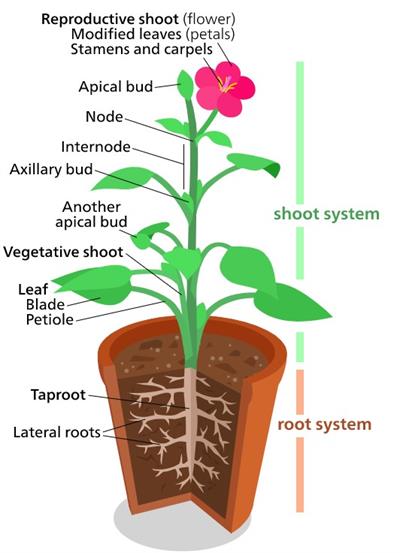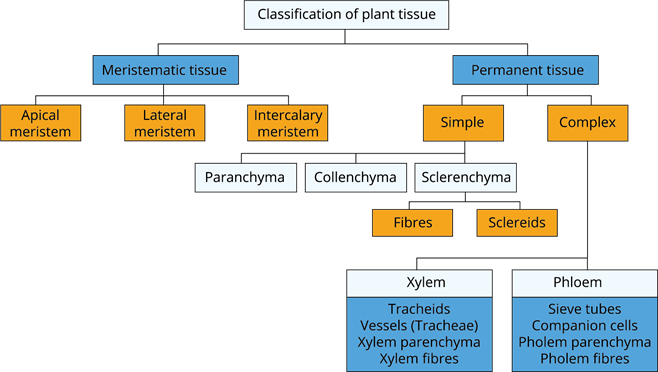
PUMPA - SMART LEARNING
எங்கள் ஆசிரியர்களுடன் 1-ஆன்-1 ஆலோசனை நேரத்தைப் பெறுங்கள். டாப்பர் ஆவதற்கு நாங்கள் பயிற்சி அளிப்போம்
Book Free DemoProperties of plant tissues:
- In plants, dead supportive tissues are abundantly present when compared to living tissues.
- Plants require less energy for their survival.
- The structural organisation of organs and organs system is simple.
- Tissue organisation is meant for a stationary habit of plants.
- Due to the continuous division of meristematic tissue, plants grow continuously.
- Dead cells which are present in plant tissues provide mechanical support.
- Plant tissues are divided into two types, i.e. Meristematic tissues and Permanent tissues.
- There is a differentiation of tissues from meristematic to permanent tissues, which are localised into certain regions of plant-based on their dividing capacity.
Classification of plant tissues:
Plants usually are made up of two different kinds of tissues.
Vegetative tissues: Roots, stems, and leaves are the vegetative parts of the plant.
Reproductive tissues: Flowers are the reproductive parts of the plant.

Vegetative and reproductive parts of a plant
In general, plant tissues are divided into two types, namely
- Meristems or meristematic tissues
- Permanent tissues

Classification of plant tissue
Meristematic tissues:
Meristematic tissues are the group of immature cells that are capable of undergoing cell division. The tissues in which cells always keep dividing, giving rise to new cells, are called meristematic tissues.
C. Nageli coined the term meristem in \(1858\). It was derived from the Greek word "meristos", which means divisible or having cell division activity. Meristematic tissues are responsible for the growth of plants. Plants grow only in those regions where meristematic tissues are present. In plants, the meristem is found in different zones.
Example:
The apex of stem & root, leaf primordia, vascular cambium, cork cambium, etc.,
Characteristic features of meristematic tissue:
- Generally, they are made up of living cells.
- Cells are small, oval, polygonal or round.
- They are thin cell wall made up of cellulose with dense cytoplasm and large nuclei.
- Normally meristematic cells do not have vacuoles, but if it is present, they are very few and are small.
- Mitotic cell division happens in plant meristems.
- They do not store food materials because they are metabolically highly active.
- These have no intercellular spaces, so cells are closely packed together; hence it is called compact tissue.
Meristematic tissue is also called growing tissue. Meristems are broadly classified based on the
(a) Origin and development
(b) Origin of initiating cells
(c) Position in plant body
(d) Function
(a) Origin and development
(b) Origin of initiating cells
(c) Position in plant body
(d) Function
Reference:
https://upload.wikimedia.org/wikipedia/commons/a/a9/Plant.svg